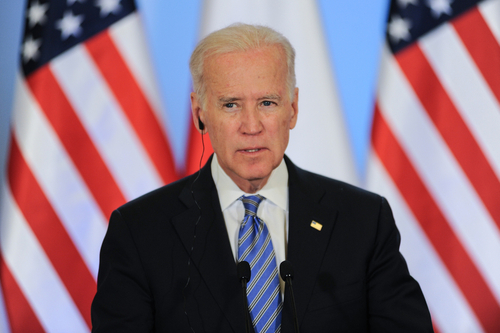Foreign holdings of U.S. Treasury debt hit a record $9.05 trillion in March, as the United Kingdom unexpectedly surpassed China to become the second-largest foreign holder for the first time since 2000.
At a Glance
- Foreign ownership of U.S. Treasuries reached an all-time high of $9.05 trillion in March, jumping by over $233 billion from February
- The UK ($779 billion) overtook China ($765 billion) as the second-largest foreign holder of U.S. debt, a position China had held since 2000
- China has reduced its Treasury holdings for five consecutive months as part of a strategy to diversify its foreign exchange reserves
- Japan remains the top foreign holder with $1.13 trillion in U.S. Treasury securities
- Treasury Secretary Scott Bessent suggests China cannot easily weaponize Treasury sales without harming its export-driven economy
Record Foreign Investment in U.S. Debt
March 2025 marked the third consecutive month of increasing foreign investment in U.S. government debt, with holdings climbing to an unprecedented $9.05 trillion. This represents a substantial increase of more than $233 billion from February’s figures and nearly 12% growth compared to the same period last year. The surge comes despite recent market volatility and concerns about America’s growing national debt, indicating continued strong international confidence in U.S. government securities as a safe haven investment.
UK Surpasses China in Historic Shift
In a significant reshuffling of America’s largest creditors, the United Kingdom has overtaken China to become the second-largest foreign holder of U.S. Treasury securities. UK investors now hold approximately $779 billion in U.S. government debt, while China’s holdings have declined to $765 billion. This marks the first time since 2000 that China has fallen to third place among foreign holders of U.S. Treasuries, representing a dramatic shift in the global economic landscape.
https://www.youtube.com/watch?v=g4C_1Wh19hk
The latest Treasury data revealed that China continued its pattern of divestment in March, with net sales of $27.6 billion in long-term U.S. debt. This represents the fifth consecutive month of reductions in China’s Treasury portfolio, with March’s decrease coming just before a period of heightened trade tensions and bond market volatility in April. China’s holdings have fallen dramatically from their peak of more than $1.3 trillion in 2011, reflecting Beijing’s long-term strategy to diversify its foreign reserves.
China’s Strategic Diversification
China’s ongoing reduction in U.S. Treasury holdings aligns with its broader strategy to diversify foreign exchange reserves away from dollar-denominated assets. The country has been gradually shifting toward other investments, including U.S. agency bonds, gold, and other international assets. This diversification effort accelerated following trade tensions with the United States during the Trump administration’s first term and continues amid renewed trade frictions.
“If they started selling Treasuries, they’d have an effect on the price, But more importantly, they accumulate dollars, and what are they gonna do with the dollars?” Scott Bessent.
The reduction in Treasury holdings occurred before President Trump’s April announcement of new tariffs, which he characterized as “Liberation Day,” and the subsequent market turbulence. Following that announcement, a significant sell-off in U.S. Treasuries occurred, and Moody’s Ratings downgraded the U.S. government’s credit rating, further pressuring Treasury bond yields. Although a 90-day pause on tariffs for most of Washington’s trading partners has since been implemented, market tensions remain elevated.
Treasury Weaponization Concerns
Despite concerns about China potentially “weaponizing” its Treasury holdings by conducting mass sales to destabilize U.S. markets, Treasury Secretary Scott Bessent has argued that such a move would likely backfire on China’s economy. Rapid sales of Treasuries would strengthen the Chinese renminbi against the dollar, potentially harming China’s export-driven economy that benefits from a relatively weaker currency exchange rate. This economic reality creates a natural constraint on how aggressively China might reduce its Treasury portfolio.
“So if they sell Treasuries, then they would have to sell RMB, and it would strengthen their currency, and they’ve been doing just the opposite, They’ve had a weak RMB, or Yuan, policy. So, it really serves no purpose for them to weaponize Treasuries.” Scott Bessent.
Japan Maintains Lead Position
While the UK-China shift has captured headlines, Japan continues to maintain its position as the largest foreign holder of U.S. Treasury securities, with holdings of approximately $1.13 trillion as of March. Japanese Finance Minister Kato Katsunobu briefly caused market concern when he mentioned potentially using treasury holdings as leverage in trade talks with the United States. However, he later clarified there was no intention to sell off U.S. debt, calming market anxieties and reaffirming Japan’s long-term commitment to U.S. government securities.
As global economic tensions persist and central banks worldwide adjust monetary policies, the shifting landscape of Treasury ownership reflects broader changes in the international financial system and geopolitical relationships. For American taxpayers and policymakers, these developments underscore both the continued appeal of U.S. debt securities and the evolving dynamics of America’s relationship with its largest creditors.






